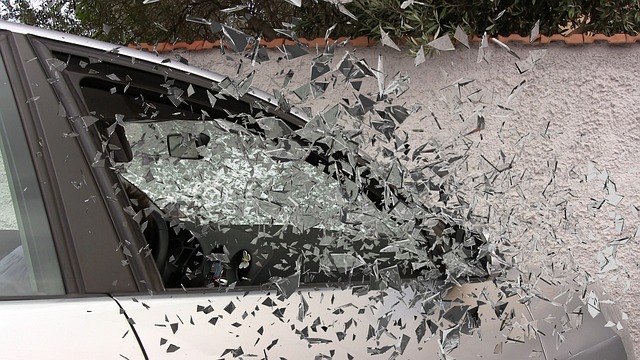Collision vs. Comprehensive Auto Insurance: Collision covers accident-related damages, while comprehensive offers broader protection against non-collision events like theft and natural disasters. Comprehensive appeals to those seeking peace of mind from diverse risks, while collision is suited for drivers focused on accident repairs. Exclusions vary; understanding them ensures suitable coverage for potential vehicle theft situations. Customizable add-ons can further protect against specific risks, providing tailored security beyond basic policies.
“Protecting your vehicle from the ultimate unwanted guest—theft—is paramount for every car owner. This comprehensive guide explores the intricacies of Auto Insurance, specifically focusing on collision and comprehensive coverage. We demystify these crucial policies, highlighting how they differ in their approach to safeguarding your vehicle.
From understanding basic coverage to navigating policy specifics like limits and deductibles, this article equips readers with knowledge to make informed choices. By the end, you’ll be ready to choose the ideal protection plan for your prized possession.”
Understanding Vehicle Theft Coverage

Vehicle theft is a serious concern for any vehicle owner, and having the right insurance coverage can provide peace of mind. It’s essential to understand the difference between collision and comprehensive auto insurance, as they offer distinct protections against various risks, including theft.
Collision insurance covers damages incurred in a traffic accident, paying for repairs or replacement if your car collides with another vehicle or object. On the other hand, comprehensive insurance provides broader protection, covering not only collisions but also theft, vandalism, natural disasters, and other miscellaneous incidents. This type of coverage is especially valuable as it ensures that you’re financially secured even when your vehicle is stolen or damaged in unforeseen circumstances.
Collision Insurance: What It Covers

Collision insurance is a crucial component of auto coverage, designed to protect policyholders from financial loss in the event of an accident. Unlike comprehensive insurance, which offers broader protection against various risks, collision coverage specifically addresses damages arising from collisions with other vehicles or objects. This includes repairs or replacements for damaged parts, up to the actual cash value (ACV) of the vehicle.
When comparing collision vs. comprehensive auto insurance, it’s essential to understand that collision insures only against physical damage. It does not cover other incidents like theft, vandalism, natural disasters, or wear and tear. Comprehensive insurance, on the other hand, provides more extensive protection by covering all non-collision related damages. This distinction is vital for drivers who want to ensure they’re adequately protected against unexpected events that could impact their vehicle’s condition and value.
Comprehensive Insurance: A Deeper Look

Comprehensive insurance offers a more thorough protection net for vehicle owners, going beyond the standard coverage provided by collision insurance. While collision insurance is designed to cover repairs or replacements resulting from accidents involving another vehicle or stationary object, comprehensive insurance steps in for damages caused by events not related to collisions. This includes theft, vandalism, natural disasters, and even animal-related incidents. Essentially, it’s a safety net that ensures you’re protected against an array of unforeseen circumstances.
Choosing between collision and comprehensive auto insurance depends on individual needs and risk tolerance. Comprehensive insurance is beneficial for those who value peace of mind and want to be prepared for any eventuality that might affect their vehicle. In contrast, collision insurance is more focused and suitable for drivers who primarily worry about accident-related damages and don’t frequently encounter situations outside the scope of collision coverage.
Comparing Policy Limits and Deductibles

When comparing auto insurance policies, understanding the difference between collision and comprehensive coverage is key. While collision insurance is designed to protect you against damages resulting from a collision with another vehicle or object, comprehensive coverage steps in for other types of losses. These include theft, vandalism, natural disasters, and animal-related incidents.
Policy limits and deductibles play a significant role in determining the cost and extent of protection. Higher policy limits offer more financial security in case of severe damage or total loss. However, a higher deductible means you’ll pay more out of pocket for claims. Balancing these factors is essential to ensure you have adequate coverage while managing your insurance costs effectively.
Common Exclusions in Auto Theft Policies

Many auto insurance policies, while offering valuable protection against accidents and damage, often have certain exclusions. When it comes to vehicle theft, it’s crucial to understand what is covered and what isn’t. Unlike collision insurance that primarily focuses on damages resulting from accidents, comprehensive auto insurance provides wider coverage for various risks, including theft. However, even comprehensive policies typically exclude situations where the vehicle was left unlocked or unattended in a high-crime area, as well as theft by someone known to the policyholder.
Another common exclusion is the failure to notify the insurance company promptly after discovering the theft. Additionally, some policies may not cover theft of personal belongings left inside the vehicle. It’s essential for policyholders to review their specific coverage and understand these exclusions to ensure they have adequate protection against vehicle theft.
Enhancing Protection: Add-on Covers

Many vehicle owners often find themselves confused between collision and comprehensive auto insurance, both of which offer crucial protection for their vehicles. However, a key difference lies in their coverage scope; while collision insurance covers damages from accidents involving another vehicle or stationary object, comprehensive insurance takes it a step further by protecting against various risks, including theft.
To enhance this comprehensive coverage, many insurance providers offer add-on covers tailored to specific concerns. For instance, these add-ons can provide extra protection against high-tech car thefts, where criminals target vehicles equipped with advanced technology. By opting for such add-ons, drivers can rest assured that their investment is safeguarded beyond the basic collision and comprehensive policies, ensuring peace of mind on the roads.
Choosing the Right Plan for Your Ride

When it comes to protecting your vehicle from theft, choosing the right insurance plan is a crucial decision. The primary options are collision and comprehensive auto insurance. Collision coverage pays for repairs if your car is damaged in an accident, but it doesn’t include protection against theft or vandalism. On the other hand, comprehensive auto insurance offers broader protection by covering not only accidents but also theft, natural disasters, and certain types of damage.
Considering that vehicle theft can happen unexpectedly, comprehensive insurance provides peace of mind with its all-encompassing approach. This type of coverage ensures that if your car is stolen, you won’t be left with a significant financial burden from the loss. In contrast, collision insurance alone leaves gaps in protection when it comes to theft and other non-accident related incidents. Thus, for comprehensive peace of mind, choosing a plan with both collision and comprehensive elements is recommended.
